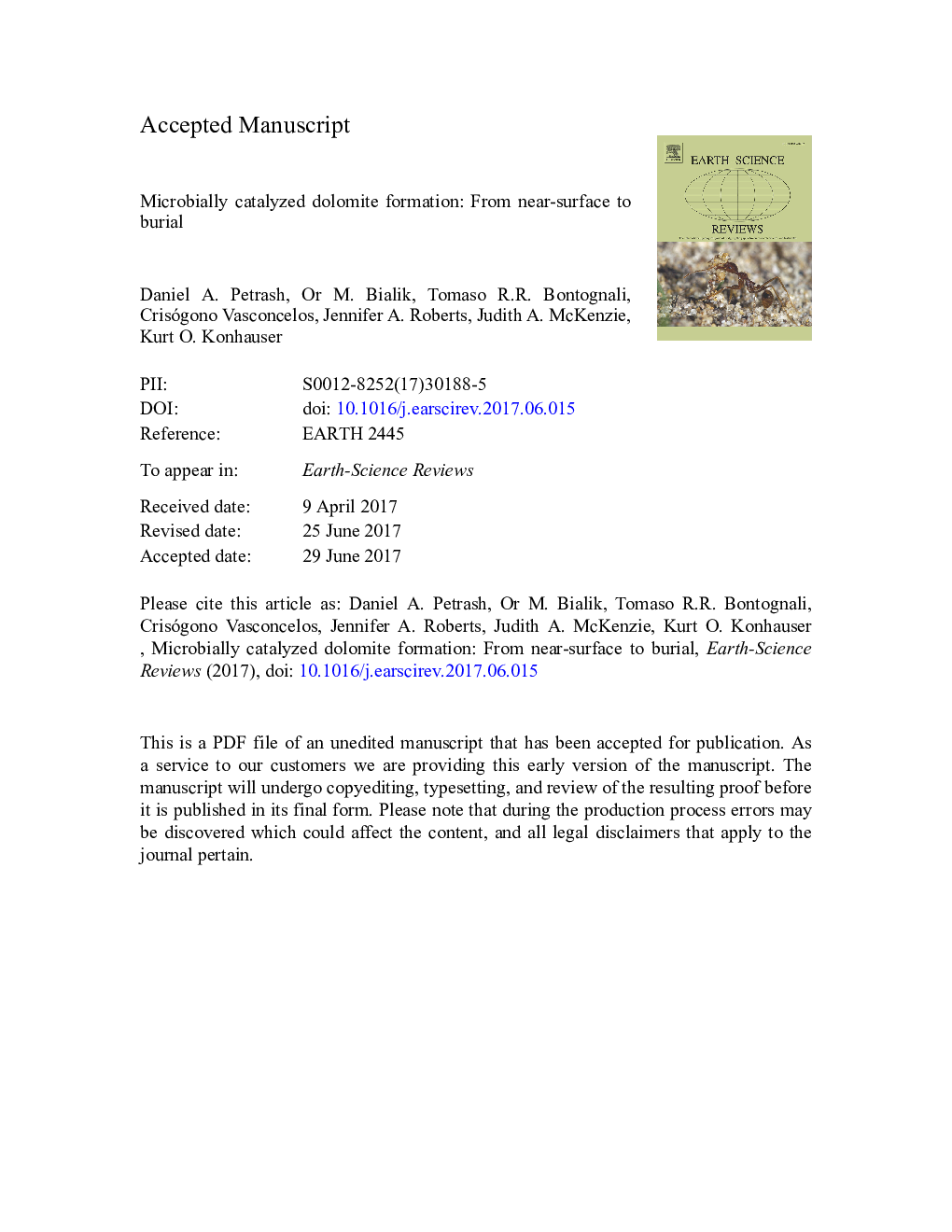| Article ID | Journal | Published Year | Pages | File Type |
|---|---|---|---|---|
| 5785100 | Earth-Science Reviews | 2017 | 89 Pages |
Abstract
Over the past century a number of models have been developed to explain the vast stratigraphic distribution of authigenic dolomite. These models include hydrogeological, geochemical and geomicrobiological interpretations that shed light on kinetic constraints on low-temperature dolomite formation, and, in particular, how certain microbes can overcome such limitations. In this review, we focus on the direct and indirect mechanisms by which microbes facilitate the nucleation and shallow burial diagenetic stabilization of dolomite in marine sediments. We also consider the likely effects of local and global scale biogeochemical perturbations over the distribution and activities of subsurface microbes, and, thus, potentially over the stratigraphic distribution of dolomite. Considering the many advances that have been made in the fields of geomicrobiology and biogeochemistry during the past 20Â years, investigating the important role microbes play in sedimentary systems will undoubtedly contribute to a more complete interpretation of dolomite formation in the rock record.
Related Topics
Physical Sciences and Engineering
Earth and Planetary Sciences
Geology
Authors
Daniel A. Petrash, Or M. Bialik, Tomaso R.R. Bontognali, Crisógono Vasconcelos, Jennifer A. Roberts, Judith A. McKenzie, Kurt O. Konhauser,
